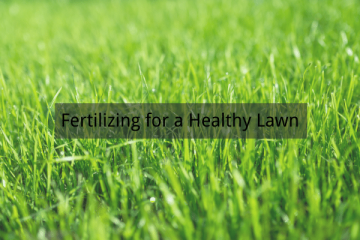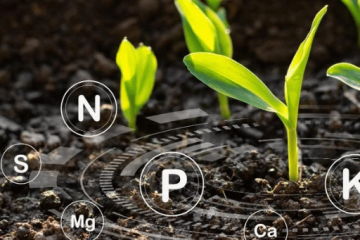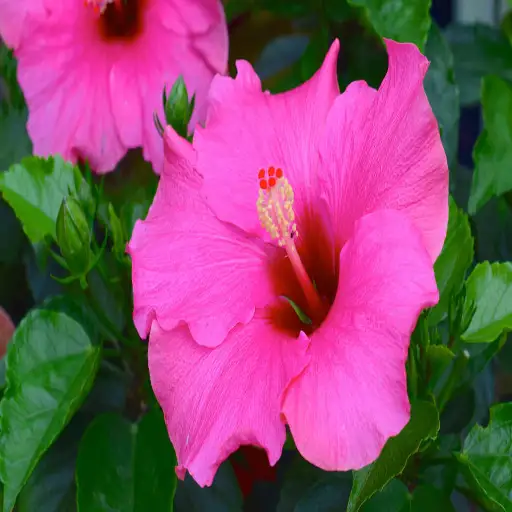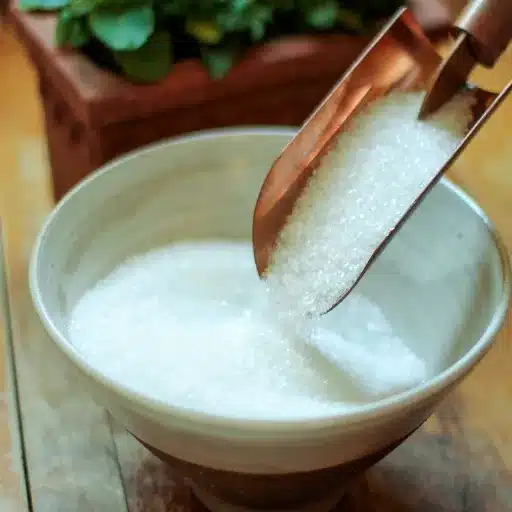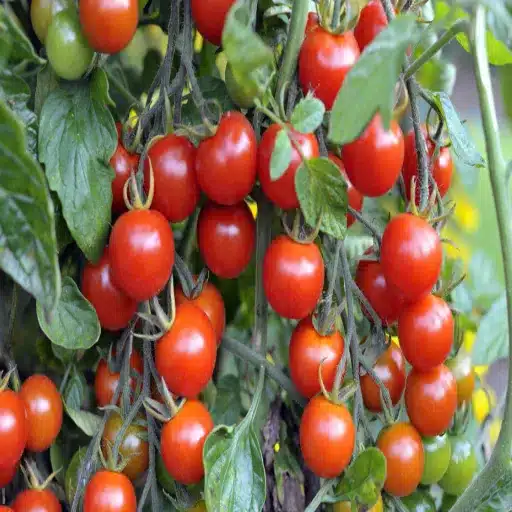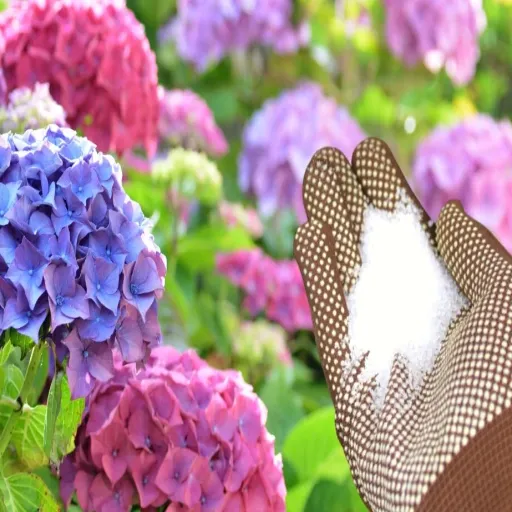Hibiscus plants are admired for their vibrant, tropical blooms and their ability to transform any garden into an exotic retreat. However, growing healthy and flourishing hibiscus requires more than just water and sunlight—it demands a careful balance of nutrients to support their growth and flowering potential. One of the lesser-known but highly effective tools for improving hibiscus health is Epsom salt. This article explores the specific effects of Epsom salt on hibiscus plants, explaining its impact on soil composition, nutrient absorption, and overall plant vitality. By understanding the science behind Epsom salt and its proper application, gardeners can enhance their hibiscus care routine and unlock richer, more abundant blossoms.
How Does Epsom Salt Benefit Hibiscus Plants?
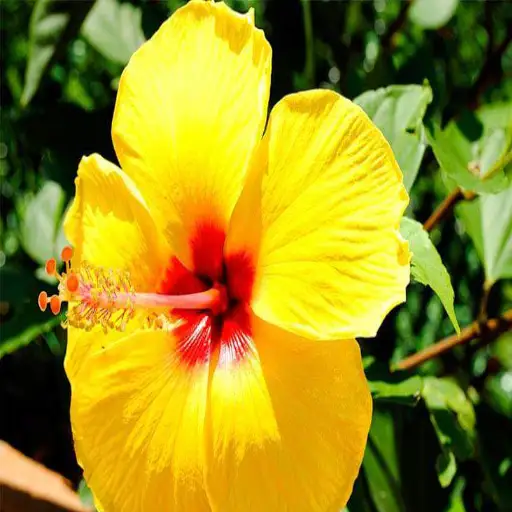
Understanding the Role of Magnesium in Hibiscus Health
Magnesium is important for hibiscus plants as it helps in carrying out photosynthesis and strengthening chlorophyll. It aids in the vibrant growth and energy production in terms of chlorophyll in the plant. With the magnesium deficiency hibiscus plants encounter symptoms like yellowing leaves (interveinal chlorosis) which makes photosynthesis very difficult for the plant.
Magnesium acts as a vital element in the chlorophyll molecule, forming the central skeleton of the molecule. The concentration of magnesium in the soil for optimal growth of hibiscus is between the range of 50-120 ppm (parts per million). Epsom salt, which contains magnesium and sulfur, greatly helps in nutrient uptake when released into the soil. MgSO₄ – Epsom salt – Potassium Sulfate
Aside from this, enabling the absorption of primary macronutrients are magnesium nitrogen and phosphorus. With provided synergy, this helps in the development of stronger root systems and more vibrant colored flowers while providing them with tolerance to stress factors like drought and pests.A careful application will 1-2 tablespoons of Epsom salt to a gallon of water, ensures precise dosing free from salt buildup or nutrient imbalance.
Boosting Hibiscus Blooms with Epsom Salt
Enhancing Epsom salt for use on hibiscus flowers requires comprehension of their sprinkling techniques and chemistry. Epsom salts (MgSO₄·7H₂O) contain Magnesium and Sulfur, which are elements crucial in the making of plant life chlorophyll and nutrient processing.
- Concentration: It is extremely recommended that the dosage of Epsom salt should be limited to 1-2 tablespoons or 15-30 grams in a gallon(3.8 liters) of water.
- Frequency: Solutions should be used 3-4 times during the growth season.
- Optimal pH Range: It is greatly necessary that the soil’s pH does not reduce nor exceed 6.0-6.5, so oxygen and nutrition will add to healthy growth alongside prevention from numbing.
Hibiscus plants are greatly advised to follow these conditions so that proper metabolic functions are achieved alongside beautiful flowers. Nonetheless, keeping a check on overnutrition is highly recommended through tests at intervals.
Addressing Yellowing Leaves and Chlorosis
The hibiscus plant’s yellowing leaves and chlorosis typically indicate an underlying deficiency in nutrients, water or poor growing conditions. For this one, I would make sure that the soil has enough aeration and drainage, because waterlogged conditions can restrict root functions and lead to discoloration of leaves. I would also analyze the nutrients the plant receives and whether the plant has sufficient nitrogen, iron, and magnesium since these elements are essential in the formation of chlorophyll.
- Insufficient Chlorophyll Consideration: Check whether the soil has between 50-150 ppm of Nitrogen. Any less than this will result in yellowish to pale hibiscus leaves.
- Iron Checking: Check whether soil pH does not exceed 6.5. Anything above that will lead to risk for iron chelating and chlorosis.
- Magnesium Concentration: Determine whether the magnesium content of soil around 50-120 ppm since being a essential element of chlorophyll molecules magnesium is required.
With proper scheduling of these technical aspects, along with consistent watering and avoiding excess water, I can bring back vitality to the plant and effectively resolve yellowing leaves.
What is the Best Way to Use Epsom Salt for Hibiscus Care?

Proper Application Techniques for Epsom Salt
Epsom salt, commonly known as magnesium sulfate, is very helpful in treating magnesium shortage problems in hibiscus plants, which frequently develop as yellowing of leaves or chlorosis. The techniques or methods of application include the following:
- Dilution for Foliar Application: Spray the leaves with a mixture consisting of 1 gallon (3.78 liters) of water and 1 tablespoon (about 15 grams) of epsom salt. This method allows for ease of magnesium absorption through the leaves and is perfect for dealing with acute magnesium deficiency.
- Soil Drench Application: The same dose of epsom salt could be used for root absorption by dissolving it in water before applying the solution around the bottom of the plants. Mature hibiscus plants need about 2-3 gallons of the mixture, while smaller-sized plants need proportionate amounts. Base the repeat application of the treatment in the observed improvement of the leaves on the time desired, every 4-6 weeks.
- Dry Soil Amendment: For a more gradual release, putting 1-2 tablespoons (15-30 grams) of Epsom salt inside the plant’s drip line and adding water afterward ensures the area the salts are placed inside are porous enough to absorb easily. It is important to make sure that the salt granules are placed about 12 inches (30 cm) away from the root to avoid root burn.
- Integration with pH and Soil Tests: Before application, perform a soil test to verify that magnesium levels do not exceed the desired range of 50-120 ppm. Ensure the soil pH lies between 6.0 and 7.0; more acidic or alkaline conditions will limit nutrient flow and make magnesium provision useless.
Following these factors while consistently observing plant response ensures efficient magnesium absorption needed for restoring hibiscus foliage vibrancy, ensuring overall plant health.
How Much Epsom Salt to Add to Your Soil
The magnesium deficiency level alongside the specific demands of your hibiscus plants dictate the precise quantity of Epsom salt to add to your soil. For general maintenance, dissolve 1 tablespoon (about 15 grams) of Epsom salt in a gallon of water and apply the solution to the soil around the plant. If dealing with severe magnesium deficiency, incorporate 2 tablespoons (around 30 grams) of Epsom salt per gallon of water. This does not need to be exceeded to avoid damaging nutrient balance or salinity levels.
- Indicators of Magnesium Deficiency: It is best to use a soil test to confirm that magnesium levels are below the optimal range of 50-120 ppm, as exceeding this range will supplement antagonistic nutrients, especially calcium and potassium.
- Application frequency: For maintenance, the Epsom salt solution can be applied biweekly to monthly. If you’re correcting deficiency, suggest re-applying every 3-4 weeks with close observation to plant response.
- pH concern: Allow for adjustment of soil pH, if needed, before Epsom salt addition so that optimum nutrient absorption conditions are not hindered.
- Water management: Maintain moisture within the soil to prevent insufficiency leading to salt buildup and ensure the necessary dissolving and absorption take place.
Following the provided care tips and checking the wellbeing of your plants will maximize the optimum magnesium levels in your hibiscus plants, enhancing their growth and the vibrancy of their leaves.
Can Epsom Salt Help with Pests and Diseases in Hibiscus?
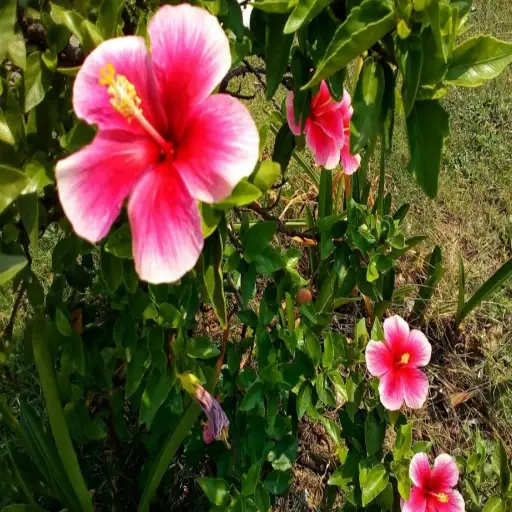
Combating Aphids and Other Pests
By improving a plant’s general health and vitality, Epsom salt could help in alleviating pest problems like aphids which can strengthen natural defenses against infestations. Even though it doesn’t work as a direct pesticide, the magnesium in Epsom salt fosters chlorophyll formation which helps in photosynthesis, which strengthens the plant tissues. Healthier hibiscus plants become less susceptible to pest damage because they are more resilient to such harmful interference.
- Magnesium Sulfate Solution: Prepare a foliar spray with Epsom salt at one tablespoon per gallon of water. Spray the solution on the leaves bi-weekly, starting in the early mornings or late afternoons to avoid leaf scorch.
- Complementary Measures: In case of targeting aphids, integrate Epsom salt treatments with integrated pest management techniqueslike releasing certain beneficial insects or using insecticidal soap.
- Regular Monitoring: Observe the plants at least once a week for the glimpse of pests. Being able to identify the problem early will guarantee quick mitigation of extensive damage and allow for timely intervention.
With this approach, Epsom salt applications and other forms of pest management can work synergistically to discourage the growth of harmful pests like aphids while encouraging the healthy growth of hibiscus plants.
Preventing Pests and Diseases with Epsom Salt
Pest and disease prevention can be aided by Epsom salt, or magnesium sulfate (MgSO₄), by addressing the plant’s magnesium deficiency which weakens them and makes it easier for pathogens to target them.
- Uptake of Magnesium and Its Influence on Plant Health: Magnesium enhances plant photoperiodic activity and is crucial in the makeup of chlorophyll, hence aiding photosynthesis. Providing magnesium leads to proper leaf growth, which enhances the plant’s natural resistance to pests like aphids and whiteflies.
- Best Application Rate: For hibiscus, the most common recommendation is to use 1-2 tablespoons of Epsom salt in a gallon and apply it as water to the soil once every 4-6 weeks during the growing season. This dosage should provide magnesium supplementation while also preventing over-fertilization.
- Faster Absorption with Foliar Application: Pests or signs of magnesium deficiency, like yellowing leaves, can prompt a foliar spray. Pour one tablespoon of Epsom salt into a gallon of water and spray to saturate the leaves early in the day or later in the day to reduce evaporation and improve absorption.
- Compatibility with Other Methods: Epsom salt can be integrated into other pest control methods, including its combination with organic insecticides or companion planting, to achieve a holistic approach towards eco-friendly pest control.
By following the recommendations, Epsom salt helps maintain plant vigor and indirectly reduces the chance of having bad pest problems or disease outbreaks.
How to Fertilize Your Hibiscus for Optimal Growth?
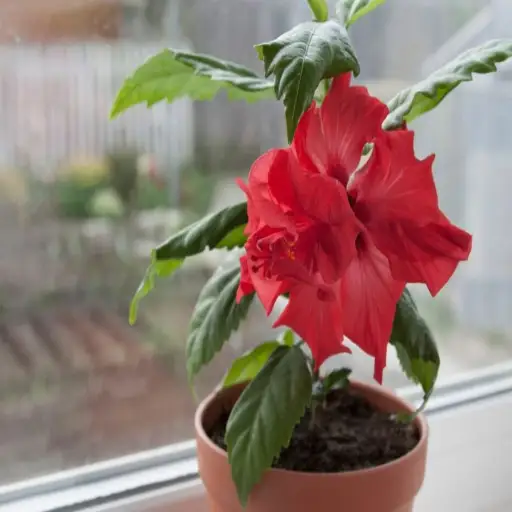
Balancing Essential Nutrients for Hibiscus
In hibiscus plants, lack of the correct nutrient balance will prevent optimal growth and flowering. The most important primary nutrients are nitrogen (N), phosphorus (P) and potassium (K). These primary nutrients are also joined by secondary nutrients such as magnesium and other important trace elements.
- Nitrogen (N): For optimal foliar growth, nitrogen must be present. You may utilize a fertilizer with a nitrogen content of 17–21% while horticulturating them during the vigorous phases of the season. Excess nitrogen should be avoided as it can cause excessive foliage at the expense of flowering.
- Phosphorus (P): Helps the plant with root development and flowering. Ensure phosphorus makes up around 5–10% of the fertilizer you are using. Make sure not to add more, or else you can risk nutrient lockout.
- Potassium (K): Assign Potassium for overall plant health and flower production. For Potassium, figures of around 20–25% are needed for floriferous plant like hibiscus. Regular top dressing helps produce strong stems with colorful flowers.
- Magnesium (Mg): Being a constituent of chlorophyll, magnesium is essential for leaves. Epsom salt of magnesium sulfate can also be added once a month at the rate of one tablespoon for every gallon of water.
- Trace Elements: In terms of enzyme activation, zinc, iron and manganese play an important role alongside boron. Make sure to treat any deficiencies by using a foliar spray containing micronutrients.
To facilitate nutrient absorption, keep the soil pH within a 6.0–6.5 range. Continually assess the response of the plants and the results of soil tests to meet the needs of the plants and avoid over or under fertilization.
Blending Hibiscus Fertilizer with Epsom Salt
Mixing Epsom salt (magnesium sulfate) with hibiscus fertilizer helps in alleviating magnesium and sulphur deficiencies, both of which are essential for the production of chlorophyll and the health of the plant. For liquid fertilizer solutions, a mixture is best with 1 tablespoon (approx. 15 grams) of Epsom salt per gallon of water. For granular applications, depending on the need, Epsom salt can be added at 1-2 pounds of Epsom for every 100 square feet of soil.
- Magnesium Content: Soils lacking in magnesium are well-assisted with Epsom’s 9.8% magnesium content.
- Sulfur Content: A plant’s lack will is supplemented with the 13% sulfur Epsom salt contains, enabling processes such as protein synthesis and enzyme activity within the plant.
- Solubility: Immediate nutrient access is enhanced by Epsom salts high water solubility, enabling foliar sprays or soil drenching, which adds to the speed with which nutrients reach the plant.
- Frequency of Application: To restrict oversupplementation during the season, application is suggested once a month during the growing season. Over-supplementation can alter the nutrient intake balance with other critical nutrients.
Balance blending ratios to monitor soil nutrient levels alongside plant response to ensure a balance of soil nutrients with continual testing.
What are the Signs of Nutrient Deficiency in Hibiscus Plants?
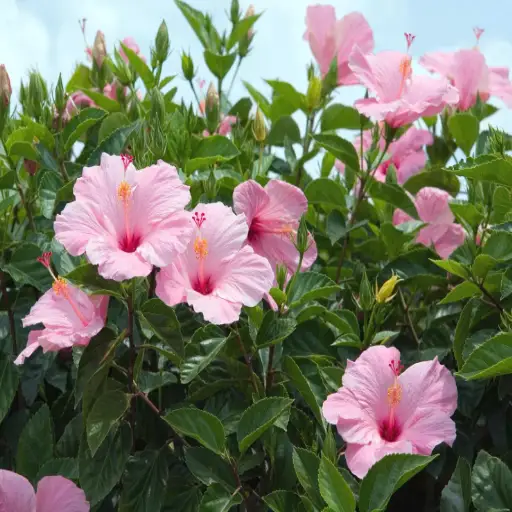
Identifying Yellowing Leaves and Their Causes
Diagnosing the hibiscus plant’s problem brings to mind several causes level leave yellowing, or chlorosis. Based on my experience, some of the more likely renders of hibiscus sapling chlorosis are the following:
- Deficiency of Nitrogen: Inhibitory nitrogen is needed in adequate amounts by all living things. Less than optimal quantities could lead to more of the less useful parts of the plant yellowing, while still maintaining newer leaves unleveled. I suggest, from dealing with many such plants, that this problem can be solved by using soil with less nitrogen than the needed 20 to 50 parts per million.
- Deficiency of Iron: With too little iron in the structure, I find that leaves appear noticeably lighter in color compared to the veins which remain dark green. Such issues arise if the ph on the soil is higher than seven and a half. I suggest using chelated iron and applying sulfur until the pH stabilizes at six or six point five.
- Deficiency of Magnesium: These types of deficiencies are notable for appearing when the yellowing starts from the perimeter of a leaf which is older, to the center. This specific ailment can be sourced from keeping the magnesium level in the soil between fifty and one-hundred twenty parts per million.
- Water Stress: Excessive watering together with poor drainage may lead to a lack of oxygen for the roots, which results in yellowing leaves. Look for signs of waterlogging and make sure soil aeration is maintained by enhancing drainage or using soil mixes that drain well.
Keeping these technical requirements within a specific range, along with regular checks of the soil and pH, will allow you to accurately diagnose and treat issues related to the yellowing of hibiscus leaves.
Understanding the Importance of Chlorophyll and Magnesium
Plants contain the green pigment known as chlorophyll which is an important part of photosynthesis. Aid in growth by converting light energy into chemical energy. The magnesium atom is crucial within the center of the chlorophyll molecule. If there is no magnesium, there is reduced production of chlorophyll which results in chlorosis, the yellowing color of leaves because of the deficiency of green pigmentation.
- Soil pH: Chlorophyll can be produced in abundant quantities only if soil has optimum concentrations of magnesium. Availability of magnesium is best at soil pH 6.0 to 7.5. Routine pH measurements are important to achieve this equilibrium.
- Magnesium Concentration: Magnesium concentrations in soil should be measured using a soil testing kit. Magnesium concentration should preferably be adequate for the specific crop grown.
- Fertilizer Usage: Magnesium deficiency should be corrected using Epsom salt (magnesium sulfate) or dolomite lime but this should be used as prescribed.
Using these measures helps in increasing chlorophyll content in plants, allowing the undertaking of vital processes like photosynthesis while preventing disorders resulting from nutrient deficiencies.
Reference sources
Frequently Asked Questions (FAQs)
Q: How does Epsom salt benefit hibiscus plants grown indoors?
A: Epsom salt provides magnesium and sulfate, which aid in the production of chlorophyll, leading to vibrant green leaves and healthy growth for hibiscus grown indoors. It can help prevent leaves from turning yellow and support new growth.
Q: Can Epsom salt affect the soil pH for hibiscus shrubs?
A: Epsom salt is neutral and does not significantly alter the soil pH. Hibiscus plants prefer slightly acidic soil, so it’s important to monitor the soil’s condition to ensure good growth.
Q: How should I apply Epsom salt to the base of the plant?
A: Dissolve Epsom salt in water and apply it around the base of the plant. This water-soluble solution ensures the nutrients are absorbed efficiently. Be careful not to burn your plants by using the correct concentration.
Q: What is the best time to water hibiscus plants with Epsom salt?
A: Water well with an Epsom salt solution every two weeks, preferably in the morning, to allow the hibiscus to absorb the nutrients throughout the day. Ensure the soil is not soggy to avoid root rot.
Q: How does Epsom salt influence the color of hibiscus blooms?
A: Epsom salt can enhance the color of hibiscus blooms by promoting healthy leaf growth and aiding in nutrient absorption, leading to more vibrant and colorful blooms in the summer and fall.
Q: Is it necessary to prune hibiscus after using Epsom salt?
A: Pruning is not directly related to Epsom salt use, but it is important for maintaining the plant’s shape and encouraging new wood. Prune in late summer to remove spent blooms and encourage new growth.
Q: How often should Epsom salt be used on tropical hibiscus?
A: For tropical hibiscus, apply a water-soluble Epsom salt solution every two weeks during the growing season to support healthy development and colorful blooms.
Q: Can Epsom salt help with common pests or powdery mildew?
A: While Epsom salt is not a pesticide, maintaining healthy plants with regular watering and nutrient balance can make hibiscus less susceptible to common pests and powdery mildew.
Q: Should I adjust Epsom salt usage for hibiscus grown in pots?
A: Yes, adjust the concentration of Epsom salt when used in pots to avoid nutrient buildup. Ensure regular watering and check for signs of excessive salt, such as leaf burn or discoloration.

